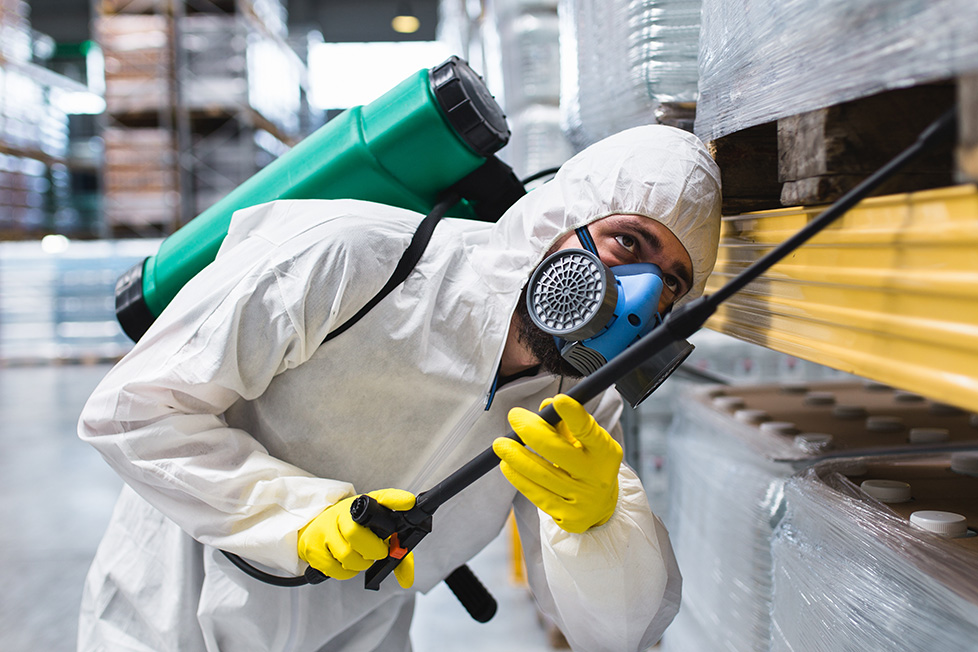Expert Pest Control to protect your property pest-free through every season.
Eco-Friendly Insect Control Approaches for Taking Care Of Wild Animals in Urban Areas
Urban areas frequently locate themselves at the intersection of human task and wild animals, leading to special obstacles in insect management. These methods not just protect the environment however also enhance community involvement in wildlife monitoring. As city populaces continue to grow, comprehending the characteristics of wildlife communications becomes progressively essential.
Understanding Urban Wildlife Characteristics
Comprehending Urban Wildlife Characteristics is necessary for establishing efficient and environmentally friendly parasite control techniques. Urban areas are increasingly ending up being environments for different wildlife varieties, driven by variables such as environment fragmentation, food availability, and human infringement. Recognizing these dynamics permits a nuanced method to pest monitoring that lines up with ecological principles.
Urban wildlife often consists of species such as raccoons, squirrels, and birds, which adjust to city environments, discovering niches in green areas, parks, and also houses. Their presence can cause conflicts with humans, especially when they manipulate human resources for food and shelter. Comprehending the behaviors and environmental duties of these types notifies methods that decrease adverse communications while promoting biodiversity.
Additionally, acknowledging the interdependencies within metropolitan environments aids in determining crucial areas for environment preservation and remediation. This understanding adds to the growth of incorporated insect management (IPM) techniques that think about the environmental equilibrium, thereby decreasing reliance on harmful chemicals. By promoting conjunction in between human beings and urban wildlife, cities can create healthier environments that benefit both residents and neighborhood environments, leading the way for sustainable metropolitan living.
Natural Repellents and Deterrents
All-natural repellents and deterrents supply a sustainable alternative to traditional insect control methods by utilizing the power of nature to keep unwanted varieties at bay. These environment-friendly services typically use plant-based components, important oils, and various other naturally taking place compounds that prevent insects without harming the atmosphere.
One efficient natural repellent is peppermint oil, which is recognized to drive away rodents and pests. Its solid fragrance is unpleasant to several insects, making it a popular choice for city settings. Similarly, vinegar and citrus peels can work as deterrents, as their solid odors are usually unappealing to numerous wildlife.
In addition, diatomaceous planet is an all-natural powder that can be spread in areas susceptible to insect activity, properly dehydrating and deterring insects without positioning threats to non-target species. Moreover, garlic sprays and neem oil are acknowledged for their capability to fend off a vast variety of bugs, consisting of both bugs and bigger wildlife.
Implementing these natural repellents not just reduces reliance on chemical pesticides yet also promotes a much healthier city ecological community, promoting a more balanced coexistence in between humans and wild animals. By using these approaches, city locations can efficiently manage parasite populaces while reducing environmental impact.
Habitat Alteration Methods
Efficient environment adjustment techniques play an essential role in lasting parasite management by altering the setting to make it much less for pest problems. By recognizing the ecological dynamics of urban areas, home proprietors can apply critical alterations that prevent parasites while advertising biodiversity.
(Bed bug exterminator Port Charlotte)One main method entails maintaining proper sanitation. This includes routine waste elimination, safeguarding garbage can, and getting rid of standing water to decrease reproducing sites for pests and rodents. In addition, landscaping techniques such as choosing native plants can enhance eco-friendly balance, providing habitats for advantageous organisms while lessening resources for insects.
Another vital strategy is to seal access points in buildings. Inspecting and fixing splits in structures, wall surfaces, and windows can substantially minimize bug gain access to. Developing physical barriers, such as fences or plant buffers, can inhibit wild animals activity right into human-inhabited locations.
Integrated Parasite Monitoring Practices
Building upon habitat alteration techniques, integrated pest management (IPM) practices offer an all natural strategy to managing parasite populations while minimizing environmental effect. IPM incorporates different strategies, including organic, cultural, mechanical, and chemical controls, to achieve efficient pest administration.
Organic control entails the intro of all-natural killers or parasites to lower insect populaces. Cultural techniques, such as plant rotation and sanitation, interfere with pest life process and diminish their habitats - Pest control service. Mechanical controls, like traps and barriers, provide immediate remedy for parasite pressures without chemical treatment
Chemical controls are used as a last resort, focusing on targeted applications that restrict injury to non-target types and the atmosphere. The choice of eco-friendly chemicals, when essential, read this post here is essential to the IPM framework. Furthermore, checking insect populations and evaluating prospective damages helps notify decision-making, ensuring that interventions are timely and efficient.
Neighborhood Participation and Education And Learning

(Mosquito Treatment)Workshops and informational sessions can equip citizens with understanding about native varieties, habitat conservation, and reliable non-toxic pest monitoring methods. Collaboration with schools, regional companies, and government companies additionally enhances instructional outreach, guaranteeing that crucial info gets to diverse target markets.
Furthermore, community-led efforts, such as community clean-up days and habitat remediation projects, not just advertise biodiversity but likewise strengthen neighborhood ties. Pest Control. By encouraging citizens to share their experiences and monitorings, areas can establish targeted techniques that attend to certain regional bug problems
Integrating feedback from locals into parasite administration prepares makes it possible for a much more receptive and adaptive strategy to wild animals obstacles. Inevitably, educated and involved communities are key to achieving long-term success in environmentally friendly bug control, bring about healthier urban settings that appreciate both human and ecological needs.

Conclusion
To conclude, environmentally friendly parasite control approaches deal sustainable options for taking care of urban wild animals. By focusing on environment modification, utilizing all-natural repellents, and carrying out incorporated parasite management practices, areas can cultivate a harmonious conjunction with neighborhood fauna. Moreover, involving residents with education and learning boosts understanding and encourages responsible wild animals interactions. Inevitably, these strategies not only shield biodiversity however also advertise environmental wellness, ensuring city locations continue to be lively ecological communities where humans and wild animals grow with each other.